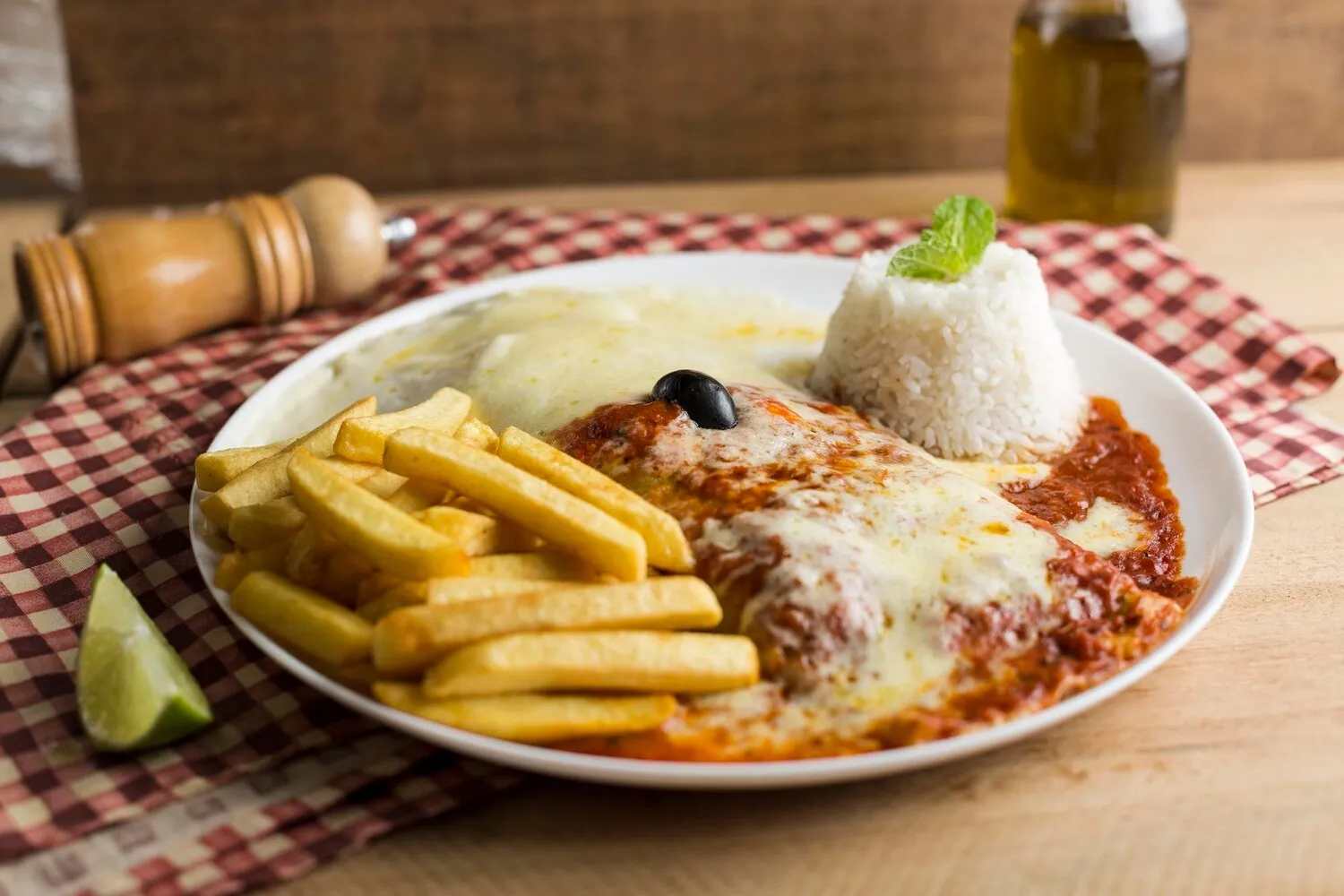
Parmegiana de Carne
Parmegiana de Carne.
Nutrition Facts
* The % Daily Value (DV) tells you how much a nutrient in a serving of food contributes to a daily diet. 2,000 calories a day is used for general nutrition advice.
Office Gourmet
Parmegiana in Brazil, including Parmegiana de Carne, is heavily influenced by Italian immigrants who arrived in the late 19th and early 20th centuries. While the original Parmigiana (usually eggplant-based) comes from Italy, Brazilians adapted it using beef steak as the main ingredient.
Parmegiana de Carne is a very popular and comforting dish in Brazil, often served in restaurants and homes. It's seen as a hearty and satisfying meal, often associated with family gatherings and special occasions.
Restaurant Staple
Parmegiana de Carne is a common item on the menu of many 'botecos' and restaurants across Brazil, ranging from casual to more upscale establishments.
Sunday Lunch
It's frequently prepared as a special Sunday lunch dish, particularly among families with Italian heritage.
Variations and Regional Differences
While the basic recipe remains consistent, regional variations exist, with some areas using different types of cheese or adding vegetables to the tomato sauce.
Parmegiana de Carne boasts a rich and savory flavor profile, combining the succulence of fried beef with the tangy sweetness of tomato sauce and the creamy, melted goodness of cheese.
The main flavors come from the fried beef steak (usually thinly sliced and breaded), the tomato sauce (typically a simple marinara-style sauce with garlic, onions, and herbs like basil and oregano), and the cheese (usually mozzarella, though provolone or Parmesan might be added). The frying process adds a crispy texture and a slightly nutty, browned flavor to the beef.
Beef Preparation
Pounding the beef steak to an even thickness is crucial for even cooking. Be sure to bread the beef thoroughly to achieve a crispy crust when frying.
Sauce Quality
Use high-quality canned tomatoes or, even better, fresh tomatoes for the sauce. Simmer the sauce for at least 30 minutes to allow the flavors to meld together.
Cheese Selection and Melting
Mozzarella is the most common cheese, but provolone adds a sharper flavor. Ensure the cheese is evenly distributed and broil briefly at the end to achieve a golden-brown, bubbly top.
Serving Suggestions
Traditionally served with white rice and french fries. A simple green salad provides a good counterpoint to the richness of the dish.
Explore additional Parmegiana dishes and restaurants
Explore ParmegianaDiscover top dining spots and culinary experiences in Duque de Caxias.
Explore Duque de CaxiasLearn more about the food culture, restaurant scene, and culinary heritage of Brazil.
Explore Brazil